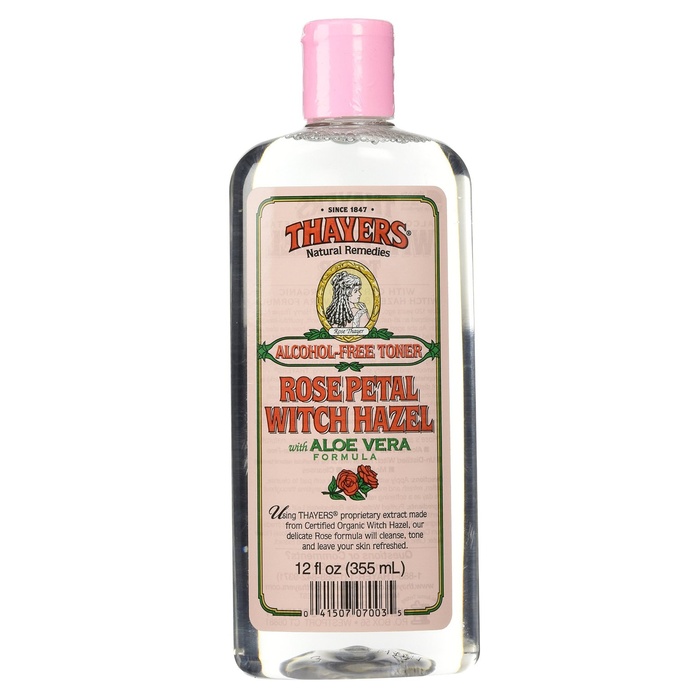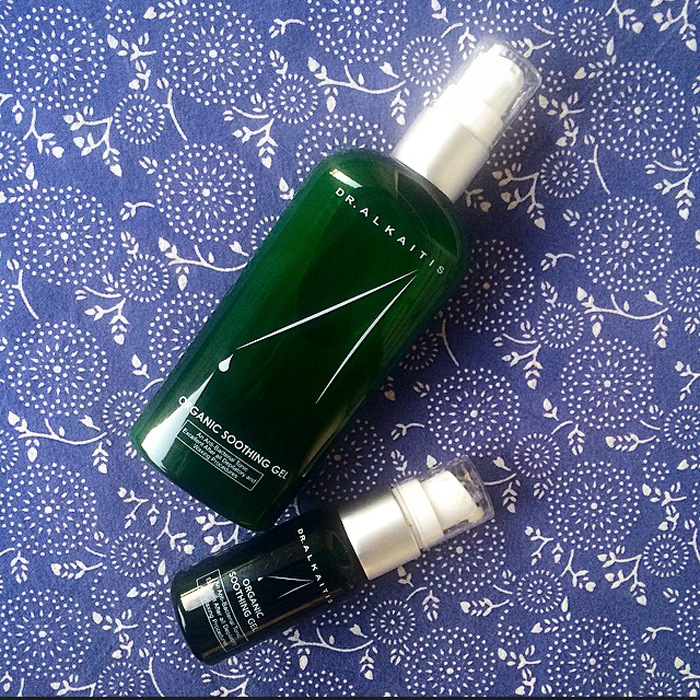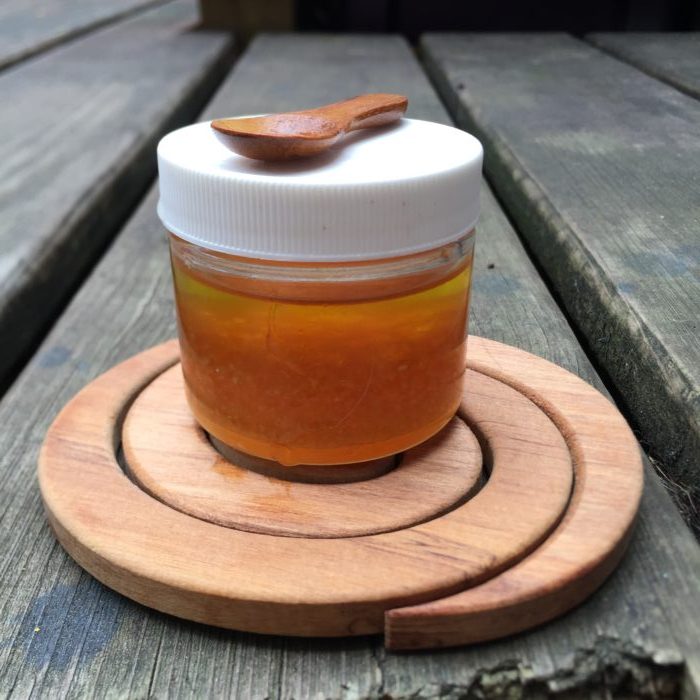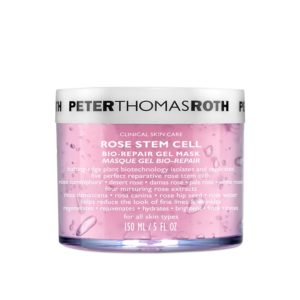Better late than never.





Better late than never.





Okay, so we’re a little past the point of spring cleaning but with last weekend’s summer solstice behind us perhaps we can call this an article dedicated to better-for-you-and-the-environment summer cleaning.
As a nutrition coach, I help guide dozens of people each year through my seasonal, whole foods detoxes. Cleaning up one’s diet is all well and good, but to truly detox we all ought to dive a little deeper into our daily habits and our cleaning closets/cabinets.
How many people out there use a countertop spray or bathroom cleaner loaded with ingredients you can’t pronounce?
I’m not here to shame you because I too have used these strange, chemical concoctions. I’m simply here to point out that, hey, if smart people like Mark Bittman recommend that we not eat anything with ingredients we can’t pronounce, why doesn’t that rule apply to the products we use daily on surfaces we eat off of and bathe in? Skin is a very porous organ, my friends! All of these products can easily seep into your system with repeated exposure whether you accidentally ingest trace amounts or simply absorb them from repeated contact.
Avoiding damaging chemical cleaning products is easier than you might think. In fact, you likely have most if not all the ingredients you need to clean and shine your pad right in your very own kitchen, pantry, and medicine cabinet.
Now that I really have your attention, here are my…
Notes:
Notes:
Notes:
Notes:
Notes:
Not only are all of these fumeless, non-toxic, and organic – they’re cheap and easy to make! Who doesn’t like cheap and easy?!
Oh boy, it’s here! Another gluten-free granola recipe for you. All of my others have had very fall-like flavor profiles (pumpkin and sweet potato) but it’s time for spring y’all. Not that peanut butter and cashews exactly scream spring like asparagus and artichokes do, but they’re tasty year-round so just enjoy.
This yummy, crunchy, savory-sweet granola is great fuel before a workout. Grab a small handful about 30-45 minutes prior to heading out the door. After a sweat session, top 3/4 cup low-fat plain greek yogurt with 1/4 cup granola and half an apple chopped for a well-balanced recovery meal. Add an extra dash of cinnamon for a more heart-healthy edge!
What You’ll Need:
How to Make It:
Note: store in an air-tight container for up to 2 weeks.
March started out on an arctic foot. Freezing temperatures, icy sidewalks, and a wintry mix welcomed us to this transitory month where winter and spring face off creating job security for meteorologists and sidewalk umbrella vendors alike.
If you’re still in hibernation mode like me you’re going to love this warming soup recipe. It’s simple to make but layered with complex flavors that take it beyond your average creamy vegetable soup. It’s light enough to be an appetizer but works just as well as a main when paired with a hefty hunk of good sourdough bread and a side salad.
Much of the subtle complexity of this soup comes from the star ingredient: kabocha squash. Kabocha squash is a type of Japanese squash with a sweet flavor akin to butternut squash, though it looks more like a small, green pumpkin. It has only 2/3 the calories of butternut squash per serving and is packed with beta-carotene which our bodies convert into Vitamin A and is essential for healthy white blood cells, a strong immune system, and good vision. Combined with antioxidant-rich curry leaves, which also deliver a rich, savory meets spicy meats sweet flavor, kabocha squash will help warm your body and keep seasonal sickness at bay.
Ingredients:
Directions:
Note: If you want to make this vegan, simply exchange butter for coconut oil and cow’s milk for coconut milk.
As a nutrition coach I’m often asked what are some of my go-to meals that are (A) healthy, and (B) quick. My response is almost always, yadda yadda yadda and “top it with an egg.” Ok, so I realize that’s not exactly helpful but it’s really that simple. Pinky swear.
For example, one of my favorite dinners when I get home late from teaching at the studio is a small bowl of leftover roasted vegetables (think carrots, turnips, beets, sweet potatoes, onions, etc) topped with an over-easy egg; or, if I’m feeling fancy, a poached egg with some fresh herbs on top. The egg white serves as a filling protein and its yolk acts as an oozy, delicious sauce to richly coat the veggies and bring the dish together.
You can pretty much top any combination of raw or roasted vegetables, fresh or sautéed greens, herbs, homemade spreads, whole grains, and/or cheeses with an egg for a healthy, satisfying meal in under 10 minutes. Look in your fridge right now and give it a try. I dare you!
I put this theory to the test while down here in Florida for a little R&R with my itinerant roomie who is currently co-habitating with another grown male. Not surprisingly, their refrigerator looked like a bachelor’s when I first arrived. All that seemed edible was a carton of eggs and a half-used log of fresh goat cheese.
I thought to myself, I can work with this.
A quick trip to Publix and I was fully stocked thanks to their house-made jalapeno-cilantro hummus, some roasted red peppers, and a bag of baby arugula. I’d already brought down some of my homemade sourdough (thanks Caroline and Karen for the starter!) so I was good to go with just those few simple ingredients.
In no time, I was enjoying my simple sandwich in balmy 78 degree weather on their screen porch. It was a nice recovery meal after my morning run by Spacecoast Stadium and kept me full for my afternoon at the beach. Yes, I realize this is cruel torture for all my DC readers. Sending you sun and heat and love <3.
Ingredients:
Directions:
WARNING: have tortilla chips and guacamole on hand – and maybe even a jug of milk (nut or seed milk for the dairy-impaired). This Habanero Hot Sauce is no joke. According to CNN, “habaneros generally score between 100,000 and 350,000 units on the Scoville scale, which measures chili pepper hotness.” For reference, jalepeno peppers usually score 2,500 to 5,000 units. Think I’m sensationalizing? These potent peppers were powerful enough to evacuate an elementary school back in April–I kid you not.
I don’t typically mess around with super spicy peppers because handling them can lead to uncomfortable side-effects (read: do not touch your eyes or other orifices after handling these until you’ve thoroughly washed your hands). In this MOARfit kitchen experiment, I found out the hard way that when you cut and cook habanero peppers, capsaicin particles are released into the air creating a hazy plume of prickly, eye watering vapor. Capsaicin is the active chemical compound in hot peppers that produces the burning sensation on our taste buds when we consume it–and as it turns out your eyes, nose and throat just from breathing.
Not for the faint of heart and certainly not for anyone who already doesn’t dig the way spicy foods make you feel, please take precautions if/when attempting to make your own Habanero Hot Sauce. Have the overhead vent going strong and a box of tissues on hand, and again, wash you hands very well when all is said and done. I might even recommend going so far as to use plastic gloves when handling these pint-size fireballs…
{makes approximately 20oz)
What You’ll Need:
How to Make It:
Let your hot sauce age for at least a week before using. Bottles and jars can be stored in the refrigerator for up to 6 months so don’t go burning off your taste buds before the new year.
Adapted from Emeril Lagasse’s Homemade Red Hot Sauce.
Washington, D.C. is bursting with countless fabulous tapas restaurants. The 14th street corridor alone hosts Barcelona, Estadio and Masa 14. While these places are all delicious and buzzing with energy, sometimes it’s nice to have the small plate experience–you know the kind where you can eat lots of different things and not feel stuffed–in your own home.
One of the easiest and healthiest tapas you can make is hummus. For me, hummus is never boring, but if a traditional blend is too bland for you my recommendation is to spice it up. I don’t just mean the spicy pepper, make-your-upper-lip-sweat kind of spice, I mean any spice(s) you love.
Topping my most loved list are, turmeric, cumin and curry–in no particular order. When I discovered the west Indian spice blend Muchi curry powder at Whole Foods, it was a game changer. Muchi is a spicier version of curry powder cut with a blend of turmeric, cardamon and other aromatic spices. I look for as many ways to use this spice combo as possible and my latest creation is this Curried Hummus.
Since you’re making this hummus from scratch there are no preservatives just whole, healthy, real foods. Garbanzo beans serve as the foundation, both in terms of consistency and nutrient density. Like all beans, garbanzo beans (aka chickpeas) are an excellent source of immune-boosting and figure-friendly dietary fiber.
And as long as you have a food processor, this recipe could not be easier. Just drop all ingredients inside, blender, scrape into an air-tight container and, voila, you have a healthy tapas or mid-afternoon snack (carrots not included) for up to a week when stored in the refrigerator.
what you’ll need.
how to make it.
Originally published on The DC Ladies blog September 3, 2014.
Everyone loves pickles. And if you are one of the few who don’t you’re really missing out. Pickles help fight disease (see below) and are shockingly easy to make. I don’t know why it took me so long to get on the homemade pickle bandwagon. Read on for how to make refrigerator pickles in a snap at home.
Pickling has become all the rage these days, as has canning, but both of these fads are methods of food preservation that go way back. In fact, pickles played an important role in Colombus’s discovery of America in 1492. You may recall that scurvy, a disease caused by lack of vitamin C, used to be a mighty big problem for sailors. Luckily, Colombus’s ship stocker had plenty of vitamin C-rich pickles on board to help prevent scurvy outbreaks on the historic voyage across the Atlantic. How’s that for a fun pickle fact?
There are hundreds of recipes you could follow, but here are some basic guidelines to get you started:
Adapted from The Old Farmer’s Almanac.
{Makes 2 pint jars}
What You’ll Need:
Equipment:
How to Make Them:
For long-term storage, follow the hot water bath canning method.
I recently did a 3-week cleanse, eliminating all gluten, dairy, added-sugar (including alcohol) and caffeine from my diet. In the end, caffeine (or the lack there of) seemed to make the biggest impact on my mental and physical sense of well-being. It’s not that I was drinking 5+ cups of coffee a day–in fact, I rarely had more than one–but as someone who is admittedly type A and stress-prone, the stimulant effect of caffeine was doing more harm than good.
Without caffeine I fall asleep faster, wake up feeling more rested and have far fewer spikes in anxiety throughout the day.
That being said, I’m someone who loves a latte from time to time and while decaf espresso is better than regular, it still contains caffeine. Everything in moderation, I still intend to have my decaf almond milk latte’s from Whole Foods every now and again, but on a more regular basis I’ve devised a delicious caffeine-free alternative loaded with superfoods.
Here are the highlights of three nutrient-dense ingredients in my caffeine-free, vegan latte:
The taste isn’t a dead ringer for coffee, but as someone who loves(/d) black coffee it comes pretty darn close.
What You’ll Need:
{makes 2 servings}
How to Make It:
Note: if you like your lattes extra hot, give this a nuke in the microwave for 30-40 seconds or heat your almond milk on the stovetop in advance of putting it in the blender.
What You’ll Need:
How to Make It:
Note: You can also add 1 tsp of vanilla extract to make it an unsweetened vanilla almond milk.
For the past 6 months, I have had a little golden packet of a special spice called saffron staring back at me from my kitchen cabinet. Saffron has a complex flavor that is often used in French bouillabaisse, Spanish paella, Milanese risotto, and many Middle Eastern dishes. I called it a “special” spice because not only is it quite pricey, but a little goes a long way when it comes to Saffron’s audacious effects on the palette.
Good news for all you natural remedy lovers out there! According to my girl Oprah, a 2008 study found that 76% of women who took daily saffron supplements reported a 50% drop in PMS symptoms like mood swings and fatigue (your welcome, in advance to the men in our lives). The spice has also been linked to the alleviation of mild to moderate depression. According to another study, saffron supplements were as effective as a common antidepressant in reducing symptoms related to depression.
This taste tantalizing and feel-good spice met its maker last weekend when I decided to dust off my dutch oven and get back to my bread baking roots. It all started because I realized I was in need of some bread to accompany two upcoming recipes–my meatless Monday Sweet Potato Bean Burgers with Maple Chipotle Mayo, and my slow-cooker Tuscan Lentil, Barley, and Kale Soup. Rather than running out to the store for a pre-made loaf, I got out my flours and yeast and got to cooking. I’ve been enjoying the bread for the last week and saved half in the freezer for when my schedule gets hectic with work travel. Give it a go and add a little something “special” to your sandwich or soup entree.
What You’ll Need:
How to Make It: